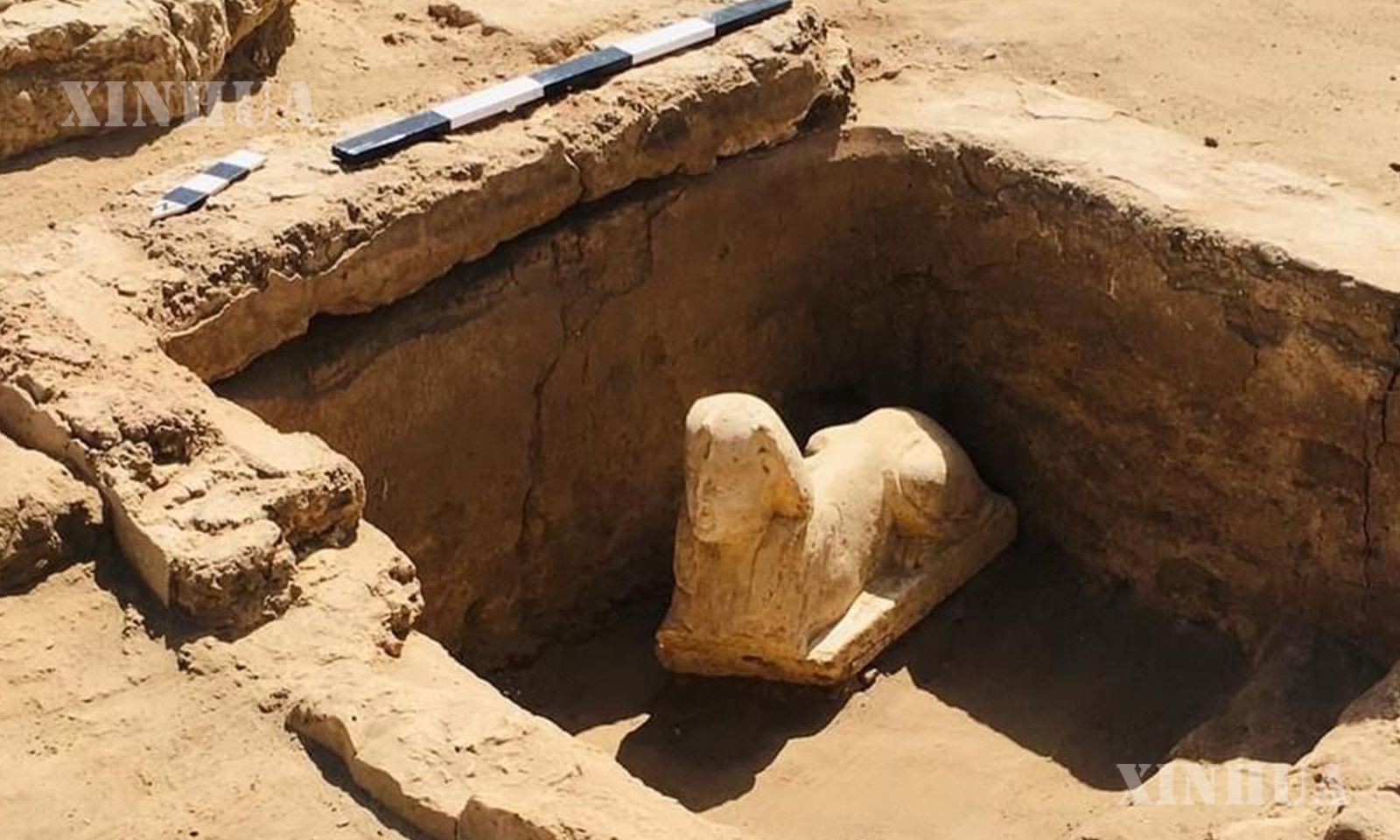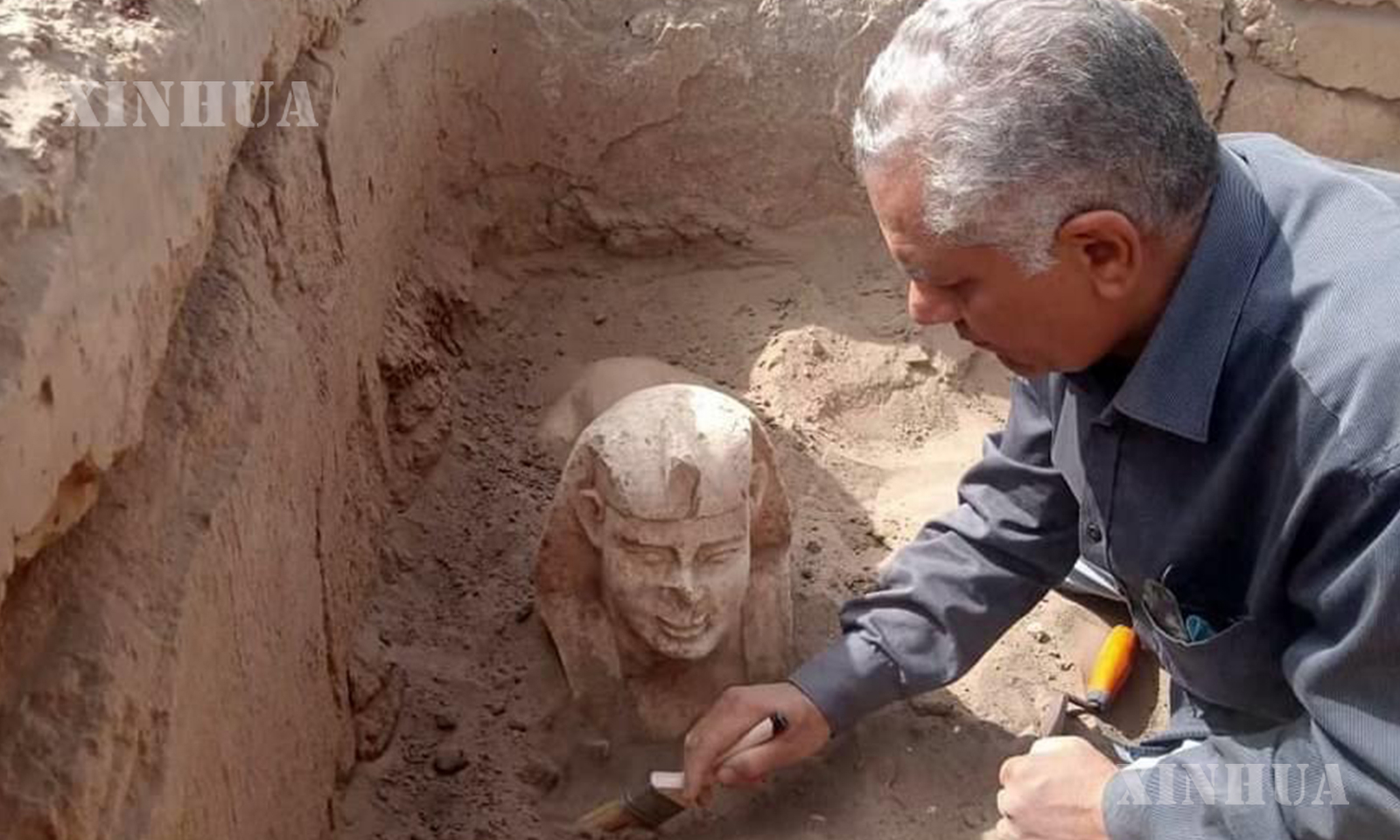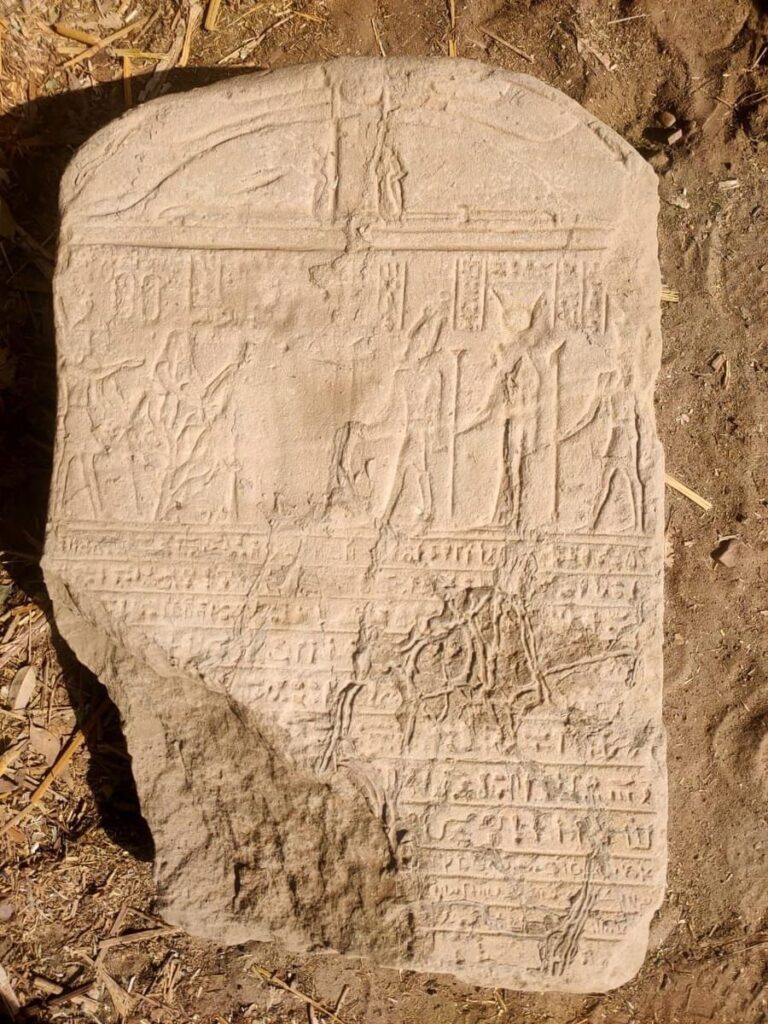Africa & Middle East
ရောမခေတ်က ခြင်္သေ့ခန္ဓာကိုယ် ၊ လူမျက်နှာရှိသော စဖင့်ရုပ်တု နှင့် ကျောက်စာတစ်ခုကို အီဂျစ်နိုင်ငံ တောင်ပိုင်းတွင် တွေ့ရှိ



ရောမခေတ်က ခြင်္သေ့ခန္ဓာကိုယ် ၊လူမျက်နှာရှိသော စဖင့်ရုပ်တုနှင့် ကျောက်စာတစ်ခုကို အီဂျစ်နိုင်ငံ တောင်ပိုင်း Qena ပြည်နယ်တွင် အီဂျစ်ရှေးဟောင်းသုတေသနအဖွဲ့က တွေ့ရှိခဲ့ကြောင်း အီဂျစ် ရှေးဟောင်းဝန်ကြီးဌာန၏ မတ် ၆ ရက် ကြေညာချက်တွင် ဖော်ပြထားသည်။
စဖင့်ရုပ်တုတွင် ဖာရိုဘုရင်များဝတ်ဆင်လေ့ရှိသော အစင်းကြောင်းပါ Nemes သရဖူဆောင်းထားပြီး နဖူးတွင် မြွေဟောက်ပုံရှိကြောင်း သိရသည်။“၎င်း၏မျက်နှာပုံစံကို ကနဦးလေ့လာကြည့်ချက်အရ ဤရုပ်တုမှာ အေဒီ ၄၁ မှ ၅၄ ခုနှစ်က ထီးနန်းစိုးစံခဲ့သော စတုတ္ထမြောက်ရောမဘုရင် ကလောဒီးယပ်စ်အတွက်တည်ဆောက်ထားခြင်း ဖြစ်နိုင်ကြောင်း” ကြေညာချက်တွင် ဖော်ပြထားသည်။
ရှေးဟောင်းသုတေသနအဖွဲ့က ရုပ်တုအောက်တွင် ကျောက်စာတစ်ခုကို တွေ့ရှိခဲ့ရပြီး ယင်းကျောက်စာသည် အရုပ်စာ(hieroglyphs)၊ ရိုးရှင်းသောစာလုံး(demotics)ဖြင့် ထွင်းထုထားခြင်းဖြစ်ရာ ၎င်းမှာ ဘီစီ ၆၅၀ ခန့်မှ အေဒီ ၅ ရာစုအထိ အသုံးပြုသော ရှေးအီဂျစ်စာရေးသားပုံစနစ်ဖြစ်ကြောင်း ကြေညာချက်တွင် ဖြည့်စွက်ဖော်ပြထားသည်။ (Xinhua)xhtxs.cn/FrA
———————————-
Roman-era sphinx, stele discovered in southern Egypt. Statue was most probably for Claudius, 4th Roman emperor ruling from 41 to 54 AD xhtxs.cn/FrA
An Egyptian archaeological mission unveiled a lime-stone sphinx and a stele that dated back to the Roman era in Qena province, southern Egypt, the country’s Antiquity Ministry said in a statement on Monday.
The sphinx-shaped statue represents one of the Roman emperors wearing a Nemes headdress, which is the striped head-cloth typically worn by pharaohs, and a cobra on the forehead.
“According to initial examination of its face, the statue most probably was for Claudius, the fourth Roman emperor, ruling from 41 to 54 AD,” the statement said.
The statement added that the archaeological team also found a stele below the statute, which was carved with texts in hieroglyphs and demotics, an ancient Egyptian writing system used from roughly 650 BC to the fifth century AD.
1.The undated photo shows a lime-stone sphinx unearthed during the archaeological excavation work in Qena Province, southern Egypt. (Egyptian Ministry of Tourism and Antiquities/Handout via Xinhua)
2.The undated photo shows an archaeologist unearthing a lime-stone sphinx in Qena Province, southern Egypt. (Egyptian Ministry of Tourism and Antiquities/Handout via Xinhua)
3.The undated photo shows a stele unearthed during the archaeological excavation work in Qena Province, southern Egypt. (Egyptian Ministry of Tourism and Antiquities/Handout via Xinhua)




